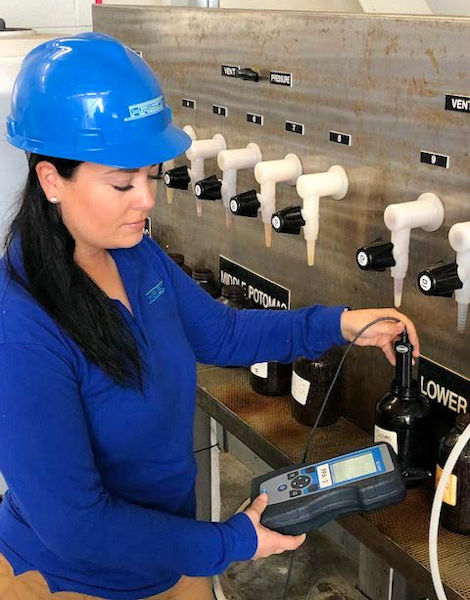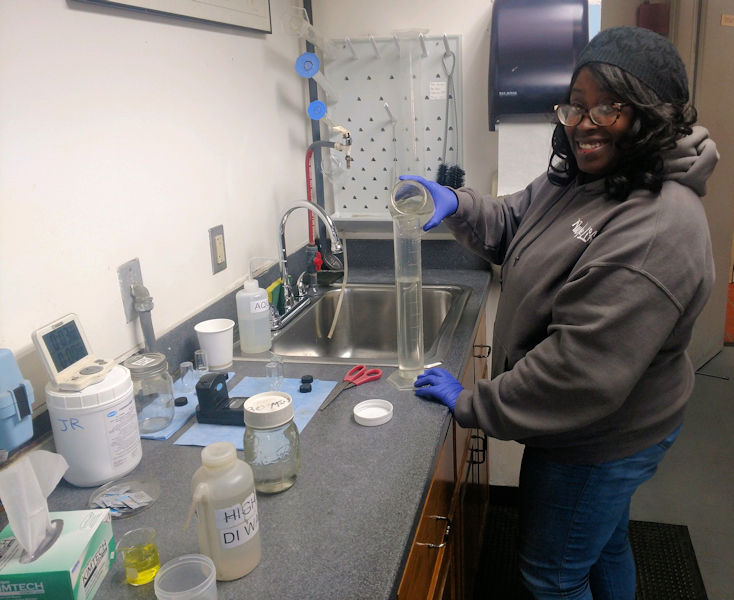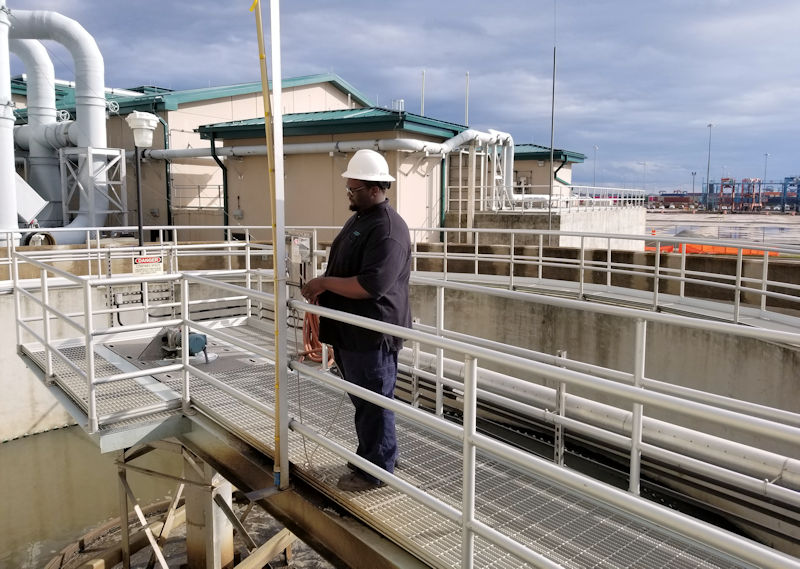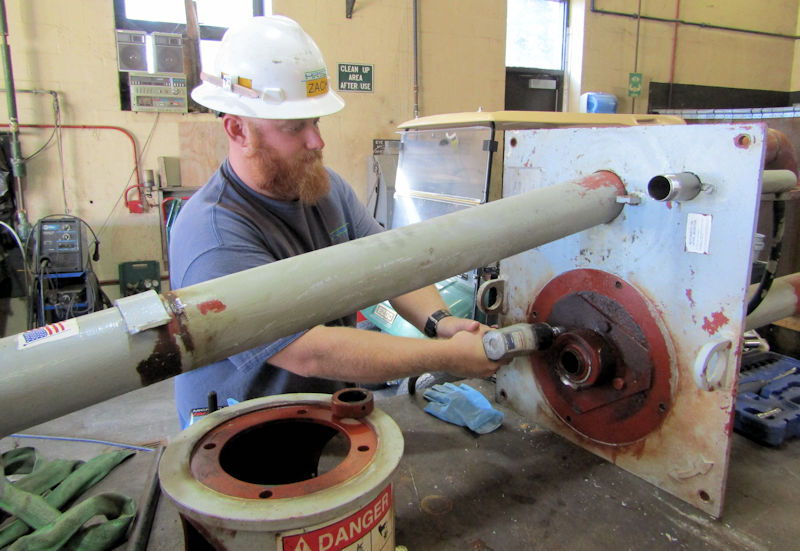
Brandie McGhee, an apprentice, performs conductivity testing of the recharge well at the Hampton Roads Sanitation District (HRSD; Virginia Beach, Va.) Sustainable Water Initiative for Tomorrow (SWIFT) Research Center. Photo courtesy of HRSD.
Faced with the challenge of staffing three new water resource recovery facilities (WRRFs), Hampton Roads Sanitation District (HRSD; Virginia Beach, Va.) launched its wastewater apprenticeship program in 1979.
HRSD has grown to operate 13 award-winning WRRFs that provide service to 1.7 million residents across 18 cities and counties. Its apprenticeship program has grown in tandem, with an average 13 apprentices graduating every year.
Now, more than 400 total graduates, apprentices, and former apprentices make up 35% of the HRSD workforce. And more than one-third of HRSD’s current leaders are former apprentices.
The nationally recognized program is the “secret sauce” behind HRSD’s long-term success, according to Ted Henifin, HRSD general manager.
Eight different apprenticeships are offered, ranging from plant and maintenance operators, to instrumentation specialists, to carpenters, to electricians. Each custom-designed apprenticeship uses a combination of paid on-the-job training and tuition-free classroom instruction led by dedicated HRSD instructors — licensed professionals with educational backgrounds up to and including doctorates.
“We believe the combination of targeted classroom learning and hands-on experience is a proven recipe for success,” said Leila Rice, HRSD director of communications.
Even after 40 years, the program continues to evolve to address changing workforce needs. This includes a new 3-year option in addition to the traditional 4-year program. Distance learning, online resources, and e-learning courses are used to engage new generations with varying learning styles.

April Langhorne, HRSD apprentice, collects a daily final effluent sample for testing. Photo courtesy of HRSD.
“Our leadership continues to support program improvements, allowing apprentices to gain the education and experience necessary for success in the field,” Rice said.
Candidates for the program must be 18 years old or older, have a high school or vocational school diploma or have passed the General Education Development (GED®) test, pass a math skills assessment, and be able to perform the essential functions of the position they seek. The number of job openings determines the number of apprenticeship opportunities available in each career path during any given year.
Providing a model of success

Apprentice James McCleese checks the nitrification enhancement clarifier biosolids depth-of-blanket measurement at the HRSD Army Base Treatment Plant in Norfolk, Va. Photo courtesy of HRSD.
With a retention rate of 95%, the HRSD apprenticeship program has garnered both local and national recognition. The organization received the 2018 National Association of Clean Water Agencies’ Workforce Development Award for the program. Several of the program’s graduates have received the Outstanding Apprentice award from the Virginia Department of Labor and Industry; many others participate on the HRSD Operation Challenge team, which has won multiple competitions.
HRSD offers its program materials to other agencies interested in developing programming based on its model. And why not? It has set a gold standard.
— Mary Bufe, WEF Highlights









April 30, 2019
Featured